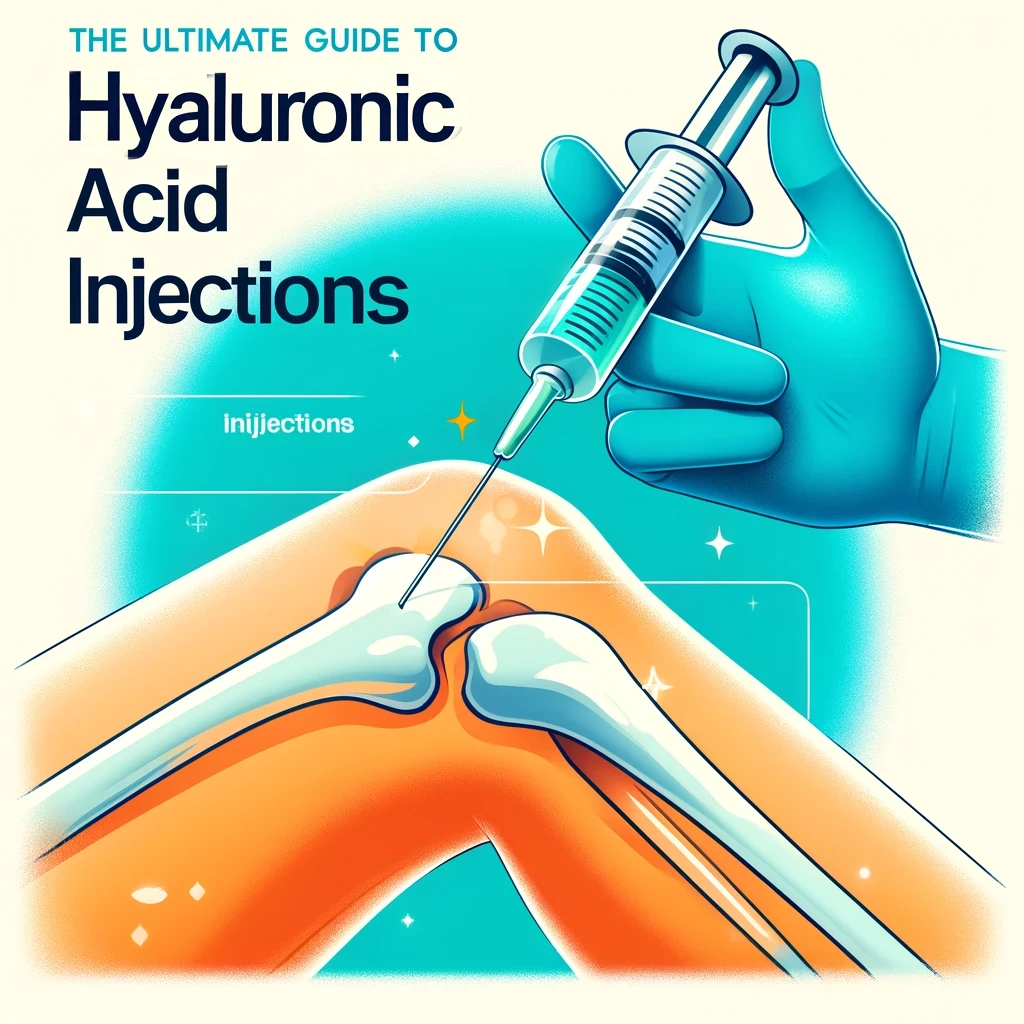
Table of Contents
Hyaluronic acid injections have emerged as a popular treatment option for both medical and cosmetic purposes. From alleviating joint pain to rejuvenating skin, these injections offer a versatile solution with a range of benefits. This guide explores everything you need to know about hyaluronic acid injections, including their uses, administration, and what to expect from the treatment.
What are Hyaluronic Acid Injections?
Hyaluronic acid injections involve the direct administration of hyaluronic acid into a targeted area of the body. Hyaluronic acid is a naturally occurring substance in the body that helps maintain moisture and lubrication in tissues. These injections can help replenish hyaluronic acid levels, providing various therapeutic and cosmetic benefits.
Common Uses of Hyaluronic Acid Injections
Osteoarthritis Treatment
One of the primary medical uses for hyaluronic acid injections is the treatment of osteoarthritis, particularly in weight-bearing joints.
- Knee Osteoarthritis: Hyaluronic acid injections are commonly used to reduce pain and improve mobility in patients with knee osteoarthritis.
- Hip Osteoarthritis: These injections can also be effective for managing pain and enhancing function in hip osteoarthritis.
Cosmetic Applications
In the cosmetic realm, hyaluronic acid injections are widely used for enhancing facial features and improving skin hydration.
- Facial Fillers: Hyaluronic acid is a popular ingredient in dermal fillers used to add volume to areas like the cheeks, lips, and under the eyes.
- Skin Hydration: Injections can also help improve skin hydration and elasticity, giving a more youthful appearance.
How Hyaluronic Acid Injections Work
Hyaluronic acid injections work by supplementing the body’s natural hyaluronic acid levels. When injected into joints, they provide lubrication and cushioning, which can reduce pain and improve joint function. In cosmetic applications, they help fill in wrinkles and add volume, enhancing the skin’s appearance.
Types of Hyaluronic Acid Injections
Monovisc
Monovisc is a single-injection hyaluronic acid treatment used primarily for knee osteoarthritis. It provides long-lasting relief with just one injection.
Synvisc
Synvisc involves a series of three injections over a few weeks and is used to treat pain associated with osteoarthritis.
Other Brands
Various other brands and formulations of hyaluronic acid injections are available, each with specific indications and benefits.
Benefits of Hyaluronic Acid Injections
Pain Relief
For patients with osteoarthritis, hyaluronic acid injections can provide significant pain relief by improving joint lubrication and reducing inflammation.
Improved Joint Function
These injections help enhance joint function, allowing for better mobility and quality of life.
Cosmetic Enhancements
In cosmetic treatments, hyaluronic acid injections can improve facial volume, reduce wrinkles and enhance overall skin appearance.
How Hyaluronic Acid Injections are Administered
Preparation
Before administering hyaluronic acid injections, the area is cleaned, and a local anesthetic may be applied to minimize discomfort.
Injection Procedure
The injection process involves using a fine needle to deliver hyaluronic acid directly into the targeted area. The procedure is quick and usually performed in a clinical setting.
Post-Injection Care
After the injection, patients may experience mild swelling or discomfort, which typically subsides within a few days. Following any post-care instructions provided by the healthcare provider is essential.
Effectiveness of Hyaluronic Acid Injections
Clinical Studies
Clinical studies have shown that hyaluronic acid injections can effectively reduce pain and improve function in osteoarthritis patients. Cosmetic applications also show high patient satisfaction rates.
Patient Experiences
Many patients report significant improvements in joint pain and cosmetic outcomes following hyaluronic acid injections, often noting enhanced mobility and a more youthful appearance.
Potential Side Effects
Common Side Effects
Common side effects include temporary pain, swelling and redness at the injection site.
Rare Complications
Rare complications can include allergic reactions or infections. Discussing potential risks with your healthcare provider is essential before treatment.
Who Should Avoid Hyaluronic Acid Injections?
Contraindications
Hyaluronic acid injections may not be suitable for individuals with allergies to hyaluronic acid or those with certain medical conditions.
Special Considerations
Patients with a history of allergic reactions or those currently experiencing infections should consult their doctor before receiving injections.
Comparing Hyaluronic Acid Injections with Other Treatments
Corticosteroid Injections
Corticosteroid injections provide quick relief for inflammation but may have more side effects compared to hyaluronic acid injections.
Physical Therapy
Physical therapy offers a non-invasive alternative for improving joint function and managing pain but may require longer treatment duration.
Surgical Options
Surgery might be necessary for severe cases, but hyaluronic acid injections can be a less invasive option for managing symptoms.
Advancements in Hyaluronic Acid Injection Technology
New Formulations
Advancements include formulations designed for longer-lasting effects and fewer side effects.
Delivery Techniques
Improved delivery techniques, such as ultrasound-guided injections, enhance the precision and effectiveness of hyaluronic acid treatments.
Cost of Hyaluronic Acid Injections
Average Costs
The cost of hyaluronic acid injections can vary, typically ranging from $300 to $800 per injection, depending on the treatment area and formulation.
Insurance Coverage
Many insurance plans cover hyaluronic acid injections for medical conditions like osteoarthritis. Cosmetic applications may not be covered.
How Often Can You Get Hyaluronic Acid Injections?
Guidelines for Frequency
The frequency of injections depends on the condition being treated. For osteoarthritis, injections are typically administered every 6-12 months. Cosmetic treatments may vary.
Risks of Overuse
Overuse of hyaluronic acid injections can lead to diminishing returns and potential side effects. It’s essential to follow medical advice on treatment frequency.
Lifestyle Adjustments Post-Injection
Activity Modifications
Post-injection, patients may need to modify their activities to avoid stressing the treated area.
Dietary Recommendations
Maintaining a healthy diet can support joint health and enhance the effectiveness of hyaluronic acid treatments.
Conclusion
Hyaluronic acid injections offer a versatile solution for managing joint pain and enhancing cosmetic appearance. Understanding their uses, benefits and potential risks can help you make informed decisions about your treatment options. Always consult with your healthcare provider to determine if hyaluronic acid injections are suitable for your specific needs.
FAQs
What conditions can hyaluronic acid injections treat?
They are used to treat osteoarthritis and for cosmetic enhancements like reducing wrinkles and adding facial volume.
How soon can I expect relief after a hyaluronic acid injection?
Relief typically begins within a few days and can last several months for osteoarthritis and immediate visible results for cosmetic uses.
Are there any long-term side effects of hyaluronic acid injections?
Long-term side effects are rare but can include mild swelling or discomfort at the injection site.
How often can I receive hyaluronic acid injections?
Generally, for osteoarthritis, injections can be administered every 6-12 months. For cosmetic purposes, it varies based on the area treated.
What should I do if I experience severe pain after a hyaluronic acid injection?
Contact your healthcare provider immediately if you experience severe pain or other unusual symptoms.



